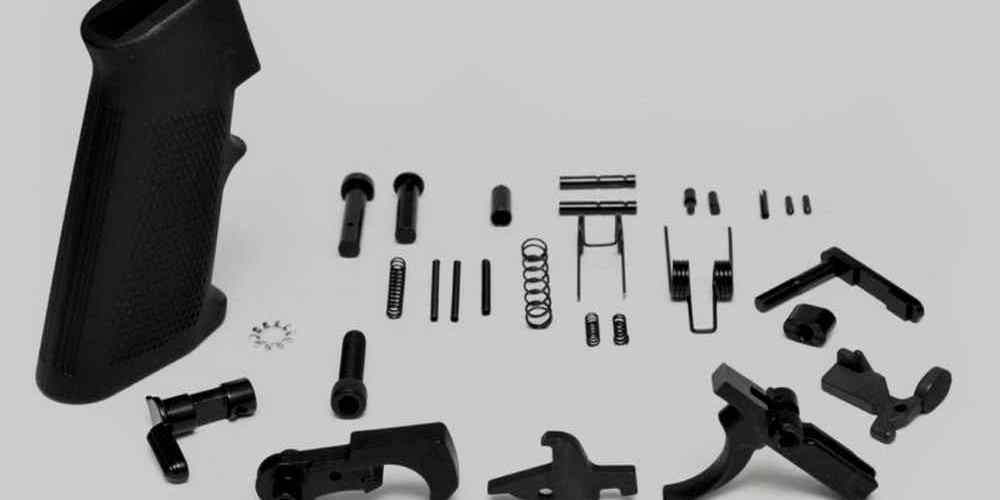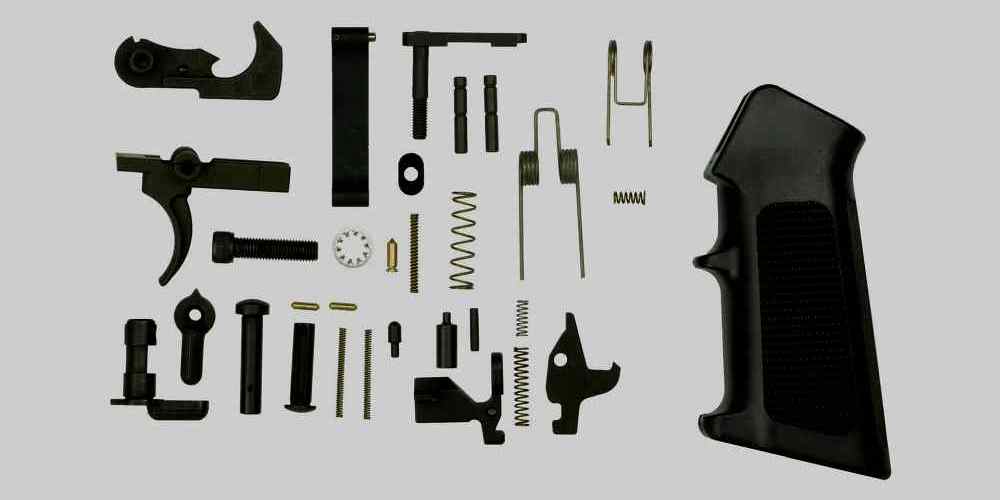“Reducing the environmental footprint, one AR15 lower receiver at a time.”
Energy Consumption in AR15 Lower Receiver Production
The production of AR15 lower receivers has become a hot topic in recent years due to its environmental impact. One of the key factors contributing to this impact is the energy consumption involved in the manufacturing process. In this article, we will explore how energy is used in the production of AR15 lower receivers and the implications it has on the environment.
To begin, it is important to understand the various stages involved in the production of AR15 lower receivers. The process typically starts with the extraction of raw materials such as aluminum, which is then smelted and formed into the desired shape. This initial stage alone requires a significant amount of energy, as the extraction and processing of aluminum are energy-intensive processes.
Once the raw materials have been obtained and shaped, they are then machined and finished to create the final product. This stage also requires a substantial amount of energy, as precision machining and finishing processes are typically carried out using high-powered machinery that consumes a large amount of electricity.
In addition to the energy consumed during the production process itself, there are also indirect energy costs associated with the transportation of raw materials and finished products. The transportation of materials to and from manufacturing facilities, as well as the distribution of finished products to retailers, all contribute to the overall energy consumption of AR15 lower receiver production.
Overall, the energy consumption involved in the production of AR15 lower receivers is significant and has a notable impact on the environment. The extraction and processing of raw materials, the machining and finishing processes, and the transportation of materials all contribute to the overall carbon footprint of AR15 lower receiver production.
One potential solution to reduce the energy consumption of AR15 lower receiver production is to invest in more energy-efficient manufacturing processes. By using advanced technologies and equipment that consume less electricity, manufacturers can significantly reduce their energy consumption and environmental impact.
Another approach to reducing the energy consumption of AR15 lower receiver production is to source raw materials from sustainable and environmentally-friendly sources. By using recycled aluminum or other eco-friendly materials, manufacturers can reduce the energy required for extraction and processing, as well as minimize the environmental impact of their operations.
In conclusion, the energy consumption involved in the production of AR15 lower receivers is a significant factor contributing to its environmental impact. By investing in more energy-efficient manufacturing processes and sourcing materials from sustainable sources, manufacturers can reduce their energy consumption and minimize their carbon footprint. It is important for manufacturers and consumers alike to be aware of the environmental implications of AR15 lower receiver production and work towards more sustainable practices in the future.

Waste Generation and Disposal in AR15 Lower Receiver Production
The production of AR15 lower receivers has become a hot topic in recent years, with concerns about the environmental impact of this process coming to the forefront. One of the key issues surrounding the production of AR15 lower receivers is the generation and disposal of waste. In this article, we will explore the environmental impact of waste generation and disposal in AR15 lower receiver production.
When it comes to the production of AR15 lower receivers, waste generation is a significant concern. The manufacturing process for these components involves the use of various materials, including aluminum, steel, and polymer. These materials are often machined, molded, or forged to create the final product, resulting in a significant amount of waste material being generated in the process.
One of the primary sources of waste in AR15 lower receiver production is metal shavings. These shavings are created when the raw materials are machined or forged into the desired shape. While some of these shavings can be recycled and reused in the production process, a significant amount ends up as waste that must be disposed of properly.
In addition to metal shavings, the production of AR15 lower receivers also generates waste in the form of scrap material. This scrap material can include pieces of aluminum, steel, or polymer that are left over after the manufacturing process is complete. Like metal shavings, some of this scrap material can be recycled, but a portion of it will ultimately end up in landfills.
The disposal of waste generated in AR15 lower receiver production is another environmental concern. Improper disposal of waste can lead to pollution of the air, water, and soil, as well as harm to wildlife and ecosystems. It is essential for manufacturers to have proper waste management practices in place to minimize the environmental impact of their operations.
One way that manufacturers can reduce the environmental impact of waste generation and disposal in AR15 lower receiver production is by implementing recycling programs. By recycling metal shavings and scrap material, manufacturers can reduce the amount of waste that ends up in landfills and minimize the need for new raw materials to be extracted from the earth.
Another way to reduce waste generation in AR15 lower receiver production is by optimizing the manufacturing process to minimize material waste. This can be achieved through the use of advanced machining techniques, improved tooling, and better quality control measures. By reducing the amount of waste generated during production, manufacturers can lessen their environmental impact and improve the sustainability of their operations.
In conclusion, the production of AR15 lower receivers has a significant environmental impact, particularly in terms of waste generation and disposal. Manufacturers must take steps to minimize waste generation, implement recycling programs, and optimize their manufacturing processes to reduce their environmental footprint. By taking these actions, manufacturers can help protect the environment and create a more sustainable future for the production of AR15 lower receivers.
Water Usage in AR15 Lower Receiver Production
The production of AR15 lower receivers has become a hot topic in recent years due to its environmental impact. One aspect of this impact that often goes unnoticed is the amount of water used in the manufacturing process. Water is a vital resource that is often taken for granted, but its usage in the production of AR15 lower receivers can have significant consequences on the environment.
To understand the impact of water usage in AR15 lower receiver production, it is important to first understand the manufacturing process. Lower receivers are typically made from aluminum, which requires a significant amount of water to produce. The process begins with the extraction of bauxite ore, which is then refined into alumina before being smelted into aluminum. Each step of this process requires water, from mining to refining to smelting.
In addition to the water used in the production of aluminum, water is also used in the machining process to shape the lower receiver. CNC machines, which are commonly used in the production of AR15 lower receivers, require water for cooling and lubrication. This water is often mixed with cutting fluids and other chemicals, which can further impact the environment if not properly managed.
The environmental impact of water usage in AR15 lower receiver production is not limited to the extraction and machining processes. The disposal of wastewater from these processes can also have negative consequences on the environment. Wastewater from aluminum production can contain heavy metals and other pollutants that can contaminate water sources if not properly treated.
To mitigate the environmental impact of water usage in AR15 lower receiver production, manufacturers can take several steps. One option is to invest in water recycling and treatment systems to reduce the amount of freshwater used in the production process. By recycling and treating wastewater, manufacturers can minimize their impact on local water sources and reduce the amount of pollutants released into the environment.
Another option for reducing water usage in AR15 lower receiver production is to explore alternative materials and manufacturing processes. For example, some manufacturers are experimenting with using recycled aluminum or other materials that require less water to produce. By exploring these alternatives, manufacturers can reduce their reliance on water-intensive processes and minimize their environmental impact.
In conclusion, water usage in AR15 lower receiver production is a significant environmental issue that should not be overlooked. The production of aluminum and machining of lower receivers both require large amounts of water, which can have negative consequences on the environment if not properly managed. By investing in water recycling and treatment systems, exploring alternative materials and manufacturing processes, and taking other steps to reduce water usage, manufacturers can minimize their impact on the environment and help create a more sustainable future.
Carbon Emissions from AR15 Lower Receiver Production
The production of AR15 lower receivers has become a hot topic in recent years due to its environmental impact. One of the key concerns surrounding this issue is the amount of carbon emissions that are generated during the manufacturing process. Carbon emissions are a major contributor to climate change, and it is important to understand how the production of AR15 lower receivers contributes to this problem.
When it comes to carbon emissions, the production of AR15 lower receivers is no exception. The manufacturing process involves a number of steps that release carbon dioxide into the atmosphere. From the extraction of raw materials to the machining and finishing processes, each step in the production of AR15 lower receivers contributes to the overall carbon footprint of the product.
One of the primary sources of carbon emissions in the production of AR15 lower receivers is the extraction of raw materials. The materials used to make AR15 lower receivers, such as aluminum and steel, are typically mined from the earth. The process of mining these materials requires heavy machinery and equipment that run on fossil fuels, releasing carbon dioxide into the atmosphere. Additionally, the transportation of these materials to the manufacturing facility also contributes to carbon emissions.
Once the raw materials have been extracted, they must be processed and machined to create the final product. This process involves the use of energy-intensive machinery that is powered by electricity generated from fossil fuels. The machining process itself also generates heat, which further contributes to carbon emissions. In addition, the finishing process, which involves coating the AR15 lower receiver with a protective finish, also releases carbon dioxide into the atmosphere.
Overall, the production of AR15 lower receivers is a carbon-intensive process that has a significant impact on the environment. The carbon emissions generated during the manufacturing process contribute to climate change and air pollution, which can have far-reaching consequences for both the environment and human health.
In order to address the environmental impact of AR15 lower receiver production, manufacturers can take steps to reduce their carbon footprint. One way to do this is by investing in renewable energy sources, such as solar or wind power, to power their manufacturing facilities. By using clean energy sources, manufacturers can reduce their reliance on fossil fuels and decrease their carbon emissions.
Another way to reduce the environmental impact of AR15 lower receiver production is by improving the efficiency of the manufacturing process. This can be achieved through the use of more energy-efficient machinery and equipment, as well as implementing recycling and waste reduction programs. By minimizing waste and maximizing efficiency, manufacturers can reduce their carbon emissions and lessen their impact on the environment.
In conclusion, the production of AR15 lower receivers has a significant environmental impact, particularly in terms of carbon emissions. By understanding the sources of carbon emissions in the manufacturing process and taking steps to reduce them, manufacturers can help mitigate the environmental impact of AR15 lower receiver production. By investing in renewable energy sources, improving efficiency, and implementing waste reduction programs, manufacturers can work towards a more sustainable future for the production of AR15 lower receivers.
Environmental Regulations and Compliance in AR15 Lower Receiver Production
The production of AR15 lower receivers has become a hot topic in recent years, not only due to the controversy surrounding the firearm itself but also because of the environmental impact of its production. Lower receivers are a crucial component of the AR15 rifle, serving as the frame that houses the trigger group and magazine well. While the AR15 is a popular firearm for sports shooting and self-defense, the production of its lower receivers can have significant environmental consequences.
One of the primary environmental concerns associated with AR15 lower receiver production is the use of materials such as aluminum and polymer. Aluminum is a commonly used material for lower receivers due to its strength and durability, but the extraction and processing of aluminum can have a significant impact on the environment. The mining of bauxite, the primary source of aluminum, can lead to deforestation, habitat destruction, and water pollution. Additionally, the smelting process used to extract aluminum from bauxite releases greenhouse gases and other pollutants into the atmosphere.
Polymer lower receivers, on the other hand, are made from synthetic materials such as nylon and fiberglass. While these materials are less environmentally damaging to produce than aluminum, they are still derived from non-renewable resources and can contribute to pollution during the manufacturing process. The production of polymers often involves the use of toxic chemicals and the release of harmful byproducts into the environment.
In addition to the materials used in AR15 lower receiver production, the manufacturing process itself can also have environmental consequences. The machining and finishing of lower receivers require the use of energy-intensive equipment and processes, which can contribute to greenhouse gas emissions and other forms of pollution. The disposal of waste materials generated during production, such as metal shavings and chemical residues, can also pose a threat to the environment if not properly managed.
To address these environmental concerns, manufacturers of AR15 lower receivers are increasingly turning to sustainable practices and materials. Some companies are exploring the use of recycled aluminum and polymers in their production processes, reducing the demand for virgin materials and minimizing the environmental impact of their products. Others are investing in energy-efficient technologies and waste management systems to reduce their carbon footprint and minimize pollution.
In addition to adopting sustainable practices, manufacturers of AR15 lower receivers are also subject to environmental regulations and compliance requirements. In the United States, the production of firearms is regulated by federal and state agencies, which set standards for emissions, waste disposal, and other environmental impacts. Companies that fail to comply with these regulations can face fines, penalties, and other enforcement actions.
Overall, the environmental impact of AR15 lower receiver production is a complex issue that requires careful consideration and action. While the production of firearms will always have some level of environmental impact, manufacturers can take steps to minimize their footprint and operate in a more sustainable manner. By using recycled materials, investing in energy-efficient technologies, and complying with environmental regulations, manufacturers can help reduce the environmental impact of AR15 lower receiver production and contribute to a cleaner, healthier planet.





